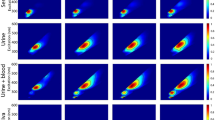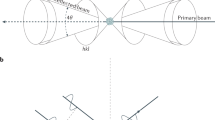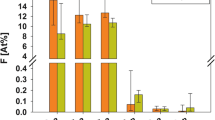Abstract
EVIDENCE has been given that there are two types of fluoride in human serum. The observation that 80–90 per cent of the fluoride is not made available as exchangeable fluoride ion until after ashing suggests that it might be bound in some fashion to the serum proteins1. I have therefore determined the distribution of exchangeable and non-exchangeable fluoride relative to the serum proteins, after electrophoresis.
This is a preview of subscription content, access via your institution
Access options
Subscribe to this journal
Receive 51 print issues and online access
$199.00 per year
only $3.90 per issue
Buy this article
- Purchase on Springer Link
- Instant access to full article PDF
Prices may be subject to local taxes which are calculated during checkout
Similar content being viewed by others
References
Taves, D. R., Nature, 217, 1050 (1968).
Taves, D. R., Talanta, 15, 969 (1968).
Taves, D. R., Talanta (in the press).
Carlson, C. H., Armstrong, W. D., and Singer, L., Amer. J. Physiol., 199, 187 (1960).
Seppilli, A., Candeli, A., and Scassellati-Sforzolini, G., Gion. Biochem., 5, 180 (1956).
Cheng, J. Y., Yu, M. H., Miller, G. W., and Welkie, G. W., Env. Sci. Tech., 2, 367 (1968).
Author information
Authors and Affiliations
Rights and permissions
About this article
Cite this article
TAVES, D. Electrophoretic Mobility of Serum Fluoride. Nature 220, 582–583 (1968). https://doi.org/10.1038/220582a0
Received:
Revised:
Issue Date:
DOI: https://doi.org/10.1038/220582a0
This article is cited by
-
Imaging of Site Specific Bone Turnover in Osteoporosis Using Positron Emission Tomography
Current Osteoporosis Reports (2014)
-
Toxicology of perfluorinated compounds
Environmental Sciences Europe (2011)
Comments
By submitting a comment you agree to abide by our Terms and Community Guidelines. If you find something abusive or that does not comply with our terms or guidelines please flag it as inappropriate.



